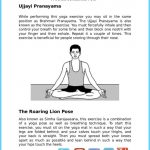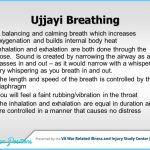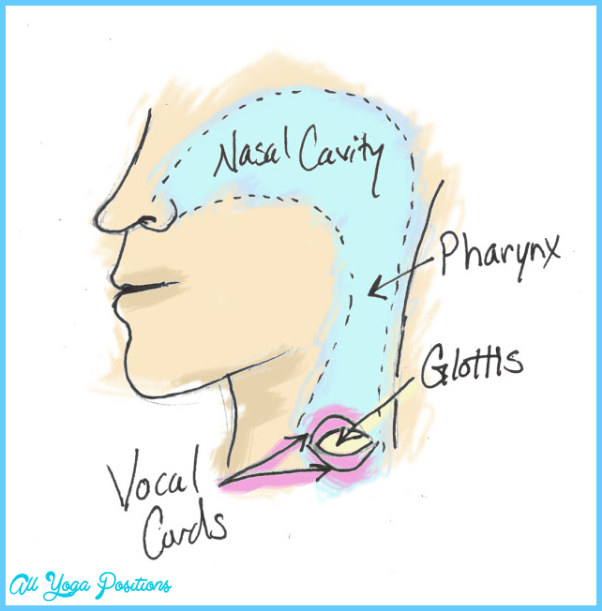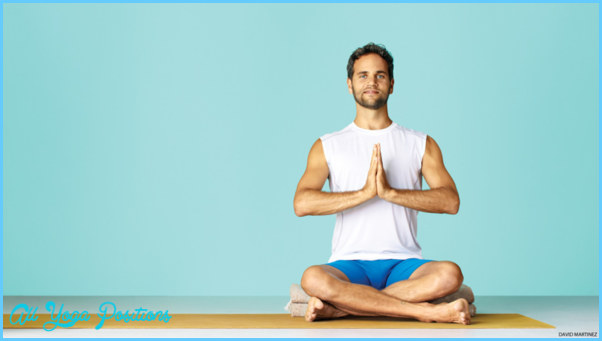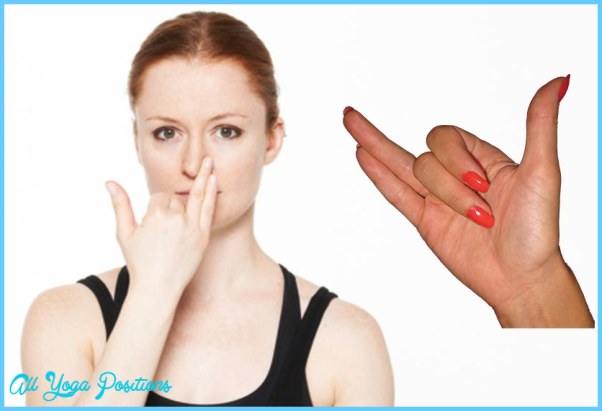Allow the upper body to droop forward with groaning:
You are standing loosely in a straddle position. The palms of your hands are placed on the navel area. Inhale through the nose and groan whilst exhaling by allowing your upper body to loosely hang forward. Groan away everything that restricts you, which burdens you or blocks you. Whilst doing this try and remember pain you may have incurred or intolerable situations.
Letting the head sink with groaning:
In the straddle position or in a wide-legged sitting position on a chair straighten yourself up and place the palms of your hands over the navel area. Look at the ceiling and then allow your head to sink relieved forward, in conjunction with releasing groans and liberating noises that should start deep in the pelvis area.
Yoga Breath Ujjayi Photo Gallery
Laughing and crying
Common expressions like laughing is healthy, liberating laughter, to die laughing, laughing tears of joy, I’m in no laughing mood clearly demonstrate the emotionally liberating effect of laughing. Paracelsus was of the opinion that is would be better for a village if a laughing tomfool were go there than if ten serious doctors were to go there.
Physiologically laughing arises through short bursts of exhalation, whereby the vocal cords alternately move closer and then further apart. Laughing is one of the best automatic breathing and voice exercises; it deepens inhalation and exhalation, maintains the diaphragm elastic, which is our main breathing muscle. Laughing is healthy, is a well-known tenet, and rightfully so. Laughing is relaxing, relaxed people sometimes also laugh without reason. Laughing is contagious and promotes communication. Associate with people where you can participate in diaphragm shattering laughter.
Crying liberates, loosens, relaxes – men as well as women – even if it was previously not socially acceptable for a man to shed tears, because this could be an expression of effeminateness, weakness, concession or break-down. At least a man was not allowed to show tears on the outside, even if he was crying inside. Crying inside damages our organs; the natural release towards the outside can not take place, it can come to inflammations like e.g. with the lining of the stomach (gastritis). No wonder therefore that the so-called psychosomatic disorders are continually on the increase.
In the age of pietism it was customary to shed heart-wrenching and heart-breaking tears in the company of others, and often for hours at a time. After having cried for a quite a while one is more able to relax, one feels released from the pressure that is troubling us. One comes to peace and can most often sleep well.









